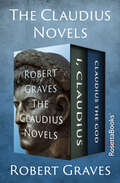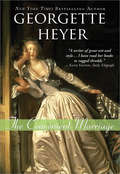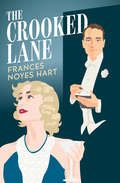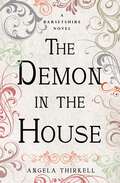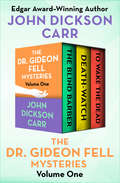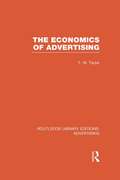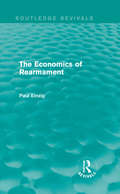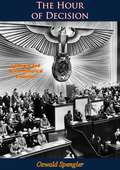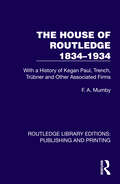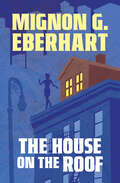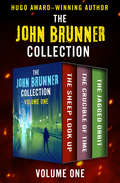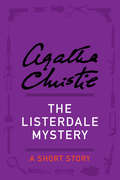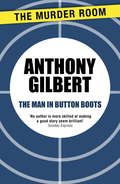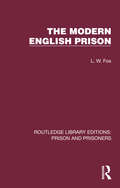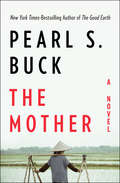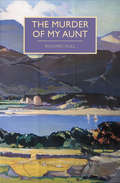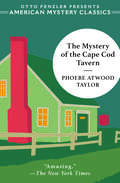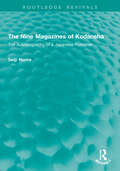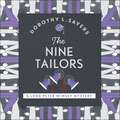- Table View
- List View
The Claudius Novels: I, Claudius and Claudius the God
by Robert GravesThe Claudius Novels includes Robert Graves’ best known historical novels, I, Claudius and Claudius the God. In I, Claudius, Robert Graves begins the story of the limping, stammering young man who is suddenly thrust onto the throne after the death of Caligula. Once a rather bookish young man with a limp and a stammer, a man who spent most of his time trying to stay away from the danger and risk of the line of ascension, Claudius seemed an unlikely candidate for Emperor. Yet, on the death of Caligula, Claudius finds himself next in line for the throne, and must stay alive as well as keep control. Drawing on the histories of Plutarch, Suetonius, and Gaius Cornelius Tacitus, noted historian and classicist Robert Graves tells the story of the much-maligned Emperor Claudius with both skill and compassion. Weaving important themes throughout about the nature of freedom and safety possible in a safety and a monarchy, Graves’ Claudius is both more effective and more tragic than history typically remembers him. A best-selling novel and one of Graves’ most successful, I, Claudius has been adapted to television, film, theatre, and audio. In Claudius the God, Graves continues the story, detailing Claudius’ 13-year reign and his ultimate downfall. Painting the vivid, tumultuous, and decadent society of ancient Rome with spectacular detail, Robert Graves provides a tale that is both instructive and compelling, and difficult to put down for both casual readers and students of Roman history.
The Convenient Marriage
by Georgette HeyerHoratia Winwood is simply helping her family When the Earl of Rule proposes marriage to her sister Lizzie, Horatia offers herself instead. Her sister is already in love with someone else, and Horatia is willing to sacrifice herself for her family's happiness. Everyone knows she's no beauty, but she'll do her best to keep out of the Earl's way and make him a good wife. And then the Earl's archenemy, Sir Robert, sets out to ruin her reputation... The Earl of Rule has found just the wife he wants Unbeknownst to Horatia, the Earl is enchanted by her. There's simply no way he's going to let her get into trouble. Overcoming some misguided help from Horatia's harebrained brother and a hired highwayman, the Earl routs his old enemy, and wins over his young wife, gifting her with a love that she never thought she could expect.
The Convenient Marriage (Regency Romances #1)
by Georgette HeyerDiscover the Regency romance writer all your favorite authors adore:"You're in for a treat." —NORA ROBERTS"One of the great protagonists of the historical novel." —PHILIPPA GREGORY "She's the original." —JULIA QUINN "Georgette Heyer created a genre so rich that thousands of us have been mining it ever since."—LORETTA CHASE"No one has ever matched Georgette Heyer for charm and wit."—LISA KLEYPAS"Georgette Heyer's legacy is a gift to all of us who love the Regency period."—LORRAINE HEATH"Georgette Heyer's Regency romances are my perennial favorites!"—LENORA BELLHoratia Winwood is simply helping her family.When the Earl of Rule proposes marriage to her sister Lizzie, Horatia offers herself instead. Her sister is already in love with someone else, and Horatia is willing to sacrifice herself and tell a few convenient lies for her family's happiness. Everyone knows she's no beauty, but she'll do her best to keep out of the Earl's way and make him a good wife. And then the Earl's archenemy, Sir Robert, sets out to ruin her reputation...The Earl of Rule has found just the wife he wants.Unbeknownst to Horatia, the Earl is enchanted by her. There's simply no way he's going to let her get into trouble. Overcoming some misguided help from Horatia's harebrained brother and a hired highwayman, the Earl routs his old enemy, and wins over his young wife—proving theirs was no accidental marriage and gifting her with a love that she never thought she could expect.
The Crooked Lane
by Frances Noyes HartA sophisticated murder mystery set in high-society Washington, DC, in the years before World War II. Karl Sheridan has recently returned to Washington, DC, from Vienna, where he studied the art of detection at the renowned Criminalistic Institute. Now he is about to face his first real-life test. Attending a high-society dinner party, Karl meets an eclectic group of dazzling, clever men and women—among them the beautiful Tess Stuart, an old childhood friend. Later that evening, he receives a desperate call from Tess when she finds her sister dead. Fay Stuart appears to have committed suicide, but there may be more to the story than meets the eye. Could one or more of Karl&’s new friends have played a part in Fay&’s death? As he plumbs the Stuart sisters&’ past, Karl soon becomes embroiled in an investigation that will tempt him to abandon the cold logic and objectivity he learned to prioritize at the institute . . . &“A good story . . . Washington society, as seen by a young visitor from the Viennese secret service and police force, and his involvement in the solving of the mystery surrounding the death of an unscrupulous girl.&” —Kirkus Reviews
The Demon in the House (The Barsetshire Novels)
by Angela ThirkellIn 1930s England, a beleaguered mother frets over her twelve-year-old’s “skirmishes with the grown-up world and his schoolmasters . . . amusingly told” (Kirkus Reviews).Laura Morland loves her son, Tony, unconditionally . . . even when he’s talking everyone’s ear off, accidentally breaking a window, shelling peas in the bathtub, or desperately trying to convince her to buy him a bicycle—the thought of which terrifies her. And of course Laura cherishes their time together when Tony’s home on break, while secretly counting the minutes until he goes back to school . . . This twentieth-century tale set in Anthony Trollope’s beloved Barsetshire is a lighthearted and sharp-witted look at the life of the upper class in prewar England, and a funny portrait of the fraught relationship between a long-suffering mother and a demanding, rambunctious, and occasionally infuriating twelve-year-old boy. Praise for Angela Thirkell and the Barsetshire novels“Thirkell writes in a charmingly easy and intimate style.” —The New York Times“[Thirkell’s] writing celebrates the solid parochial English virtues of stiff-upper-lippery, good-sportingness, dislike of fuss, and low-key irony. . . . Light, witty, easygoing books.” —The New Yorker
The Dr. Gideon Fell Mysteries Volume One: The Blind Barber, Death-Watch, and To Wake the Dead (The Dr. Gideon Fell Mysteries)
by John Dickson CarrThree Golden Age British-style whodunits from the Edgar Award–winning writer Agatha Christie called &“a master magician . . . the king of the art of misdirection.&” One of the most popular Golden Age mystery authors, John Dickson Carr was also lauded by his peers. Agatha Christie offered him the highest praise from one mystery writer to another: &“Very few detective stories baffle me, but Mr. Carr&’s always do.&” And Dorothy Sayers enthused: &“Mr. Carr can lead us away from the small, artificial world of the ordinary detective plot into the menace of outer darkness. . . . Every sentence gives a thrill of positive pleasure.&” Featured in Carr&’s widely acknowledged masterpiece, The Hollow Man, Dr. Gideon Fell is a portly sleuth whose formidable intellect is the terror of every criminal in London and the envy of every detective in Scotland Yard. The Blind Barber: Aboard the majestic ocean liner Queen Victoria, the theft of a reel of top-secret government film sets off a chase involving stolen jewels, massive marionettes, and a corpse that won&’t stay put. It will take the timely intervention of Dr. Fell to cut through the shipboard shenanigans and unmask a killer. &“A good mystery and lots of fun in the bargain.&” —The New York Times Death-Watch: A clockmaker is puzzled by the theft of the hands from a monumental new timepiece he is preparing for a member of the nobility. When one of the stolen hands is found buried between a policeman&’s shoulder blades, stopping his clock for all time, Dr. Fell comes to the aid of Scotland Yard, putting him squarely in the path of a madman with nothing but time on his hands. &“There has probably never been, either in real life or in fiction, a more elaborately planned crime than this one.&” —The New York Times To Wake the Dead: On a wager, mystery novelist Christopher Kent travels from Johannesburg to London with only the cash in his wallet and the clothes on his back. He arrives with twenty-four hours to spare, his wallet and stomach both empty. But while having breakfast at a luxurious hotel, he is implicated in the murder of a guest. Fleeing the scene, Kent takes refuge with Dr. Fell. For Kent, getting to London was easy. The trick will be avoiding the hangman. &“An excellent novel of crime and puzzlement.&” —The New York Times
The Economics of Advertising (Routledge Library Editions: Advertising)
by Frederic Wilfred TaylorWhat is the economic justification of advertising? Is it a vital energizing force in industry, or does it represent a serious waste of money and effort? The great increase in the volume of publicity in modern times is causing people to wonder what its final outcome will be, and whether it is a development to be welcomed or regarded with suspicion. First published in 1934.
The Economics of Rearmament (Routledge Revivals)
by Paul EinzigFirst published in 1934, this book explores prominent economic questions on the subject of rearmament and disarmament. Both rearmament and disarmament have a number of economic advantages and disadvantages and in each chapter Paul Einzig considers these in order to decide on which side the advantages outweigh the disadvantages. Part I of the book examines the economics of armament in the light of real experience of recent history whilst Part II looks to the probable economic effort of future rearmament.
The Financiers and the Nation (Routledge Revivals)
by Thomas JohnstonIn The Financiers and the Nation (1934) Mr. Johnston – Privy Councillor – examines a dozen or so of the most spectacular of the major financial frauds permitted by Bank of England and City merchants in 19th and early 20th centuries and ends with a few proposed remedies, among them being the nationalization of the Bank of England, the development of regional municipal banks, greater use of the Post Office Savings Bank, and the planning and direction of a capital investment board.
The General Principles of Quantum Theory (Routledge Library Editions: 20th Century Science)
by George TemplePublished in 1934, this monograph was one of the first introductory accounts of the principles which form the physical basis of the Quantum Theory, considered as a branch of mathematics. The exposition is restricted to a discussion of general principles and does not attempt detailed application to the wide domain of atomic physics, although a number of special problems are considered in elucidation of the principles. The necessary fundamental mathematical methods – the theory of linear operators and of matrics – are developed in the first chapter so this could introduce anyone to the new theory. This is an interesting snapshot of scientific history.
The Hour of Decision: Germany and World-Historical Evolution (Routledge Revivals Ser.)
by Oswald SpenglerFirst published in 1934, the ideas in this book were developed just prior to the Nazi seizure of power and it also reflects on its aftermath. It assessed the decline of European power and the crisis of Western civilization in the face of conflict between the ruling class and the lowers classes in white nations, and the ‘Coloured World Revolution’ — arguing that only by adherence to their inherited ‘Prussianism’ would Germany have the solidity to be able to combat these dangers. Despite the influence of his previous writings of key Nazi figures, his criticisms of National Socialism in this book led to it being banned, although not before it had been widely distributed throughout Germany.-Print ed.
The House of Routledge 1834–1934: With a History of Kegan Paul, Trench, Trübner and Other Associated Firms (Routledge Library Editions: Publishing and Printing)
by F. A. MumbyOriginally published in 1934, The House of Routledge, 1834-1934, was published for the company’s centenary. It tells the story of George Routledge and how he forged his way to the forefront of publishing by ‘sheer indomitable energy’. One of the objects of the work was to place on record the crowded story of his life. Turning back many forgotten or half-forgotten pages of literary and publishing history – with their glimpses of bygone haunts; of buccaneering practices in the bad old days before copyright brought protection at long last to English and American authors alike; of “Yellow Backs” and other Victorian libraries. It also covers the fortunes of other associated publishing houses of the time.
The House on the Roof
by Mignon G. EberhartIn this “Class A mystery” from the golden age of detective fiction, a woman witnesses a murder in the penthouse of her building and becomes a suspect (The New York Times).It’s an invitation Deborah should never have accepted. Tea with Mme. Mary Monroe, the famous opera singer, in her eerie house on the roof of their apartment building. Once there, what can Deborah do but politely agree to accompany the lonely Madame on the piano? But just as the singer is swept up in the strains of Massenet’s ‘Elégie,’ a shot rings out and Madame crumples to the floor. From her seat at the piano, her back to the door, Deborah doesn’t see a thing. Instead, she becomes the lead suspect in the hideous crime. An accusation that sends her back up to the top floor for answers, only to discover even greater terrors.“A terrible tale—very well done. Murders in an apartment house, and a successfully sustained atmosphere of horror. A-1 mystery.” —Kirkus Reviews
The Irish Free State: Its Government and Politics
by Nicholas ManserghOriginally published in 1936, this book provides an accurate and critical analysis of government in the Irish Free State, its principles, structure, philosophy and direction. It discusses clearly and impartially not only the failure of the Treaty settlement but also the electoral system, the legislature, the increase of executive power and the growth of administrative law and justice.
The John Brunner Collection Volume One: The Sheep Look Up, The Crucible of Time, and The Jagged Orbit
by John BrunnerThree visionary sci-fi novels from the Hugo Award–winning author whose dystopian prescience made him “one of the most important” (SF Site). British science fiction master John Brunner remains one of the most influential and respected authors of all time, and now many of his classic works are being made available to new generations of readers. The very definition of timeless, Brunner’s skillful and often frightening political and social commentary takes its place alongside the most iconic works of Arthur C. Clarke, Aldous Huxley, Margaret Atwood, and George Orwell. The Sheep Look Up: In a near future of poison air and soaring health hazards, environmentalist Austin Train is on the run—from the insurrectionists who want him to lead and the government that wants him dead, in this Nebula Award Finalist. “An arresting diary of what’s in store for us.” —The Washington Post The Crucible of Time: On a planet hurtling precariously through space, an alien civilization struggles for generations against ice ages and catastrophic meteors while scientists slowly develop the technology that will ultimately save them. “Impeccably detailed, and beautifully thought out, even to the fascinating alien personalities, speech patterns, and thoughts: Brunner in top form.” —Kirkus Reviews, starred review The Jagged Orbit: In this Nebula Award Finalist, a journalist tries to expose the corrupt director of a mental hospital in a dystopian future where drug abuse, organized crime, and the inhumane treatment of anyone deemed “insane” have all but destroyed social order. “One of his most trenchant dystopias, yet it is as irresistible as it is biting.” —SFReviews.net
The Long-Winded Lady: Notes from The New Yorker
by Maeve BrennanFrom 1954 to 1981, Maeve Brennan wrote for The New Yorker’s "Talk of the Town” department under the pen name "The Long-Winded Lady. ” Her unforgettable sketches-prose snapshots of life in small restaurants, cheap hotels, and crowded streets of Times Square and the Village-together form a timeless, bittersweet tribute to what she called the "most reckless, most ambitious, most confused, most comical, the saddest and coldest and most human of cities. ” First published in 1969, The Long-Winded Lady is a celebration of one of The New Yorker’s finest writers.
The Man in Button Boots (Murder Room #687)
by Anthony GilbertThe most glamorous hotel in Europe is not immune to murder... Classic crime from one of the greats of the Detection ClubWhen Julian Marks, a well-known diamond merchant, is found murdered at the Hotel Fantastique in Monte Carlo, the motive is presumed to be theft. Marks always carried with him an enormous diamond on a steel chain.Guests have noticed a shady character in button boots staying at the hotel. But when the diamond is found in an unexpected place, French sleuth M Dupuy has to rethink his investigation. Could the mystery man now lead him to the culprit?
The Modern English Prison (Routledge Library Editions: Prison and Prisoners)
by L. W. FoxOriginally published in 1934, The Modern English Prison was prepared in the belief that among the growing literature of crime and the treatment of crime, there should be some room for some account of the English prison system as it stood. Its first aim was to give an objective and comprehensive view of the system as it was at the time, rather than as it had been or ought to have been: the historical matter is therefore limited to what is necessary for proper understanding of present practice and no attempt is made to trespass on the ground of the penologist. Here is an authoritative and up-to-date account of the Prison System in England and Wales, prepared with the approval of the Prison Commissioners.
The Mother: A Novel (Third Volume In The Good Earth Ser. #Vol. 3)
by Pearl S. BuckFrom the Nobel Prize–winning author of The Good Earth: The &“moving story&” of a peasant woman in pre-revolutionary China who is abandoned by her husband (Kirkus Reviews). Dickensian in its epic sweep, one of Buck&’s finest novels centers on an unnamed peasant woman in pre-revolutionary China. Without warning, her restless husband abandons her. Shamed by the experience, she is left to work the land, raise their three children on her own, and care for her aging mother-in-law. To save face with her neighbors, she pretends her husband is traveling, and sends letters to herself signed in his name. Surrounded by poverty, despair, and a growing web of lies meant to protect the family, her children grow up and enter society with only the support of their mother&’s unbreakable will. An unforgettable story of one woman&’s strength and a remarkable fable about the role of mothers, this novel is a powerful achievement by a master of twentieth-century fiction. This ebook features an illustrated biography of Pearl S. Buck including rare images from the author&’s estate.
The Murder of my Aunt (British Library Crime Classics #0)
by Richard HullWITH AN INTRODUCTION BY MARTIN EDWARDS Edward Powell lives with his Aunt Mildred in the Welsh town of Llwll. His aunt thinks Llwll an idyllic place to live, but Edward loathes the countryside - and thinks the company even worse. In fact, Edward has decided to murder his aunt. A darkly humorous depiction of fraught family ties, The Murder of My Aunt was first published in 1934.
The Mysterious Affair at Styels
by Agatha ChristieThis is the Agatha Christie book that started it with the sublime introduction of her master sleuth, Hercule Poirot and his now legendary powers of detection.n Who poisoned the wealthy Emily Inglethorp and how did the murderer penetrate and escape from her locked bedroom? Suspects abound in the quaint village of Styles St. Mary from the heiress's fawning new husband to her two stepsons, her volatile housekeeper and a pretty nurse who works in a hospital dispensary. Making his unforgettable debut, the brilliant Belgian detective is on the case.
The Mystery of the Cape Cod Tavern
by Phoebe Atwood TaylorAsey Mayo, the Sherlock of Cape Cod, investigates the murder of a local innkeeper. In a small Cape Cod town, a local tavern owner is convinced that someone is trying to kill her. She tells tales of being shot at in the woods and of a trip wire strung up at the top of her staircase. Others in the village think she’s just out for some free publicity, as she’s always cooking up creative ways to get people into her establishment. But then she’s found stabbed to death and her suspicions are confirmed. Man about town and jack of all trades Asey Mayo is helping out at the tavern when the murder occurs, and he’s just the sleuth that such a dastardly case needs. It seems that Eve Prence had no shortage of enemies both at the inn and around the town. Asey Mayo knows people—especially Cape Codders—and has both the common sense and the deductive powers necessary to cut through the puzzling case and determine whodunit. But will he succeed before an innocent person takes the fall? A light, entertaining mystery with a richly described 1930s Cape Cod setting, The Mystery of the Cape Cod Tavern is an exemplary Golden Age cozy, replete with charming characters and period detail.
The Nine Magazines of Kodansha: The Autobiography of a Japanese Publisher (Routledge Revivals)
by Seiji NomaThe Nine Magazines of Kodansha (1934) is the autobiography of the Japanese publisher Seiji Noma, owner of the Kodan Company, publishing several million-selling magazines and a daily paper. Born in 1878, Noma grew up in that period of rapid transition which joined old and new Japan – the wearing of swords by samurai had only been banned two years before his birth. Hereditary social divisions were collapsing, and the young Noma seized his opportunities to make his way in the new Japan.
The Nine Tailors
by Dorothy L SayersWhen his sexton finds a corpse in the wrong grave, the rector of Fenchurch St Paul asks Lord Peter Wimsey to find out who the dead man was and how he came to be there.The lore of bell-ringing and a brilliantly-evoked village in the remote fens of East Anglia are the unforgettable background to a story of an old unsolved crime and its violent unravelling twenty years later.'I admire her novels ... she has great fertility of invention, ingenuity and a wonderful eye for detail' Ruth Rendell(P)2015 Hodder & Stoughton
